Panasonic HDC-SD1 High Definition SD Camcorder Review
Panasonic HDC-SD1 High Definition SD Camcorder
The Panasonic HDC-SD1 high definition camcorder ditches tapes for SD cards - is the future of camcorders here?
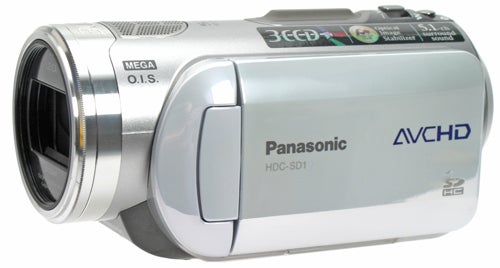
Verdict
Key Specifications
- Review Price: £764.95
Once in a while we get to try out products that aren’t just interesting or cool but mark the start of a revolution. The Panasonic HDC-SD1 camcorder is such a device – a camcorder that can capture images at 1080i resolution without the need for tapes. It’s not the first consumer level High Definition camcorder on the market, with Sony’s HDR-HD3 being its second stab at the market. However, while the HD1 and HD3 record onto MiniDV tapes the Panasonic HDC-SD1 records onto SD card. While HDV is a great format, I’ve always felt that it almost anachronistic to be using tapes in 2007 when it has been outmoded in every other sphere.
Another important selling for SD1 is its use of 3CCDs, rather than the single one found on most consumer level camcorders. This should help it deliver far greater detail and colour accuracy. The next standout feature is being able to capture sound in 5.1 and finally the capture has Panasonic’s well regarded Optical Image Stabilisation system to reduce the effects of camera shake.

One thing I noticed immediately was that it’s virtually silent in operation as you would expect from a device with no moving parts, which makes a pleasant change from the motor noise I’m used to from my own DV camcorder, which at three and half years old suddenly feels old and clunky compared to the Panasonic. What enables the use of SD cards is that Panasonic employs the new AVCHD codec, developed jointly by Panasonic and Sony. Rather than MPEG2 or DV, this codec employs H.264, as used in devices such as the Apple iPod and HD DVD and Blu ray discs.
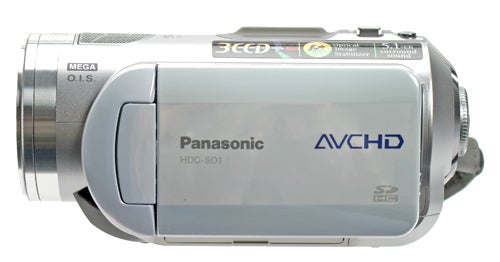
The benefit of AVCHD is that it enables very high resolution images to be captured and stored in relatively compressed small format, making the use of flash memory practical.
The actual resolution of captured footage is 1,440 x 1,080, which of course doesn’t match the horizontal resolution of full HD (1,920 x 1,080). Panasonic says the reason for this is that Full HD would put too great a strain on the processor causing too much heat and reducing battery life. However, this is the same res as used by HDV, so it’s not a backwards step.
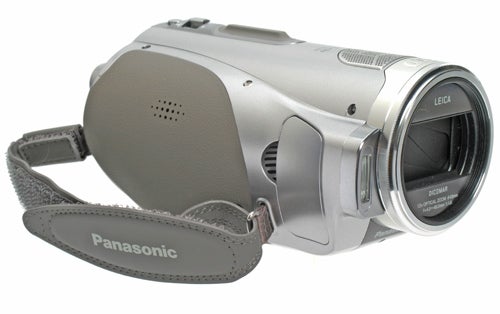
Panasonic has sensibly bundled a 4GB card with the SD1, which is enough for 40 minutes of footage at the best quality setting, 13Mbps CBR. The AVC codec is capable of 24Mbps maximum, but Panasonic has stuck with 13, presumably to save storage space and battery life. 40 minutes is still shy of the one hour that’s standard on DV, but 8GB SDHC cards that will double that are starting be become available for around £50, and you can expect the price to plummet over the next year. The ‘Normal’ and ‘ ‘Extended’ modes uses Variable Bit-Rate and will give you one hour, or one hour 30 minutes on a 4GB SDHC card.
The disadvantage of AVCHD is that it’s difficult to edit. Where’s as DV is supported by every video editing application, AVCHD is very much the new kid on the block. Fortunately, there is help at hand as Pinnacle has just released Studio Plus 11, with support for AVCHD, and Ulead has released its rather similarly named Video Studio II Plus . Those looking for higher end packages or Mac support will have to wait, though Adobe has said that its flagship Premier package will support AVCHD via a an update at some point in the future.
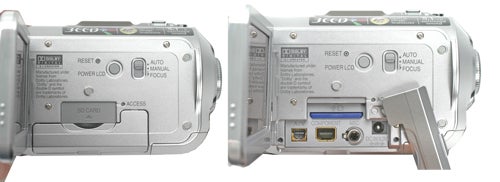
The HDC-SDC is a really lovely product to hold in the hand. It is barrel shaped, with a curved hand grip on the right and a large 3in fold-out screen that’s about as large as I’ve seen on a camcorder. It’s only 480g, which is light enough to hold for extended periods, but still weighty enough for you to be able to balance it properly to shoot. It is also some 200g lighter than the Sony AVCHD recorder, which uses a 30GB hard disk.
The display is really smooth, bright and clear and I was able to see it even in bright sunlight. At first I was a little thrown by the lack of a viewfinder option but I rarely use it much on my DV camera and the quality of the screen is such that I doubt I would miss it here. You can even choose to have composition guidelines appear on the screen if you wish. The lens has an automatic lens cover, so you don’t have to fiddle with putting a plastic cover on and off. The lens is Leica designed and branded though it’s actually manufactured by Panasonic, which give the purists something to turn their noses up at. The lens has a 12x optical zoom, and the equivalent 35mm focal length range is 38.5 – 462mm. This means that’s its not the widest angle lens in the world so take care not walk backwards to get everyone in shot when filming near cliffs.
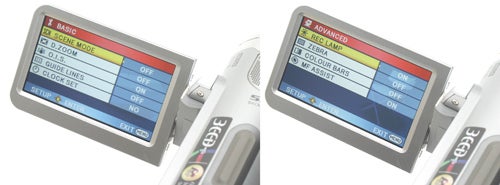
There’s a dial at the rear that has four settings, Record Mode, Playback Mode, PC connection mode and Off. It does have an Auto-Off from Record Mode, but not from the PC connection mode as I found to my cost. I forgot to turn it off after hooking up to the PC and by the time I got it home the battery was flat. Underneath the dial there’s a menu button and a button for deleting clips or stills.
To the right of the dial is a joystick for controlling the menus – pressing it in brings up virtual on-screen icons – which mimic what you do with the joystick. It’s a good control system but you still have to pay close attention to interpret the icons, though it becomes easier after some practice. You press the joystick in to bring up the virtual icon display and press it in again to remove it.
The dial and joystick fall under your right thumb, while the zoom control is a rocker switch that falls under your index finger – you still need to be delicate with it though so as to ensure you zoom smoothly. Just in front of the zoom is a button for taking still images – the SD1 will take 2.1-megapixel shots, even while filming. Meanwhile, at the other end of the barrel at the top, you’ll find the 5.1 microphone array.
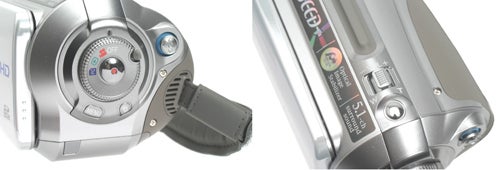
On the inside of the camera, under the display, you’ll find a button for the backlight display and a switch to move between fully auto mode, a manual mode and a mode to manually focus. There’s also a shutter that covers the SDHC card slot, and beneath this is a flap that covers the DC input and a microphone socket for a compatible external mic. There are also ports for connecting the provided Component cable or as well as a composite video with audio cable. The latter would only be for hooking us to a standard def TV as this basic connection would not be able to output high definition images. What you really want to do is use is the HDMI output that’s located under a flap on the other side, along with the USB connection.
The battery is located on the underside of the unit, at the rear, covered by a hinged flap. This makes for a very neat look but means that there isn’t an extended battery available as you won’t be able to have something sticking out of the back. There’s also a thread for a tripod so you can properly mount the camera. What’s missing is a manual focus ring, and a hot-shoe accessory, which might put off the ‘prosumer’ crowd’.
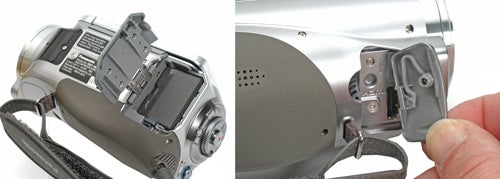
The SD1 is supremely easy to use – a proper pick-up-and-play gadget. You stab the record button in the centre of the dial to record, and again to pause – easy. While the camera can be used one handed you’ll have to use the left hand to access the menu button, unless you shift the camera or really contort your thumb. The menu provides access to all the various options, which you navigate using the joystick. You can set picture quality, turn the image stabiliser on or offor set a fade option, which will fade each scene in or out to white or black when you stop and start recording – useful considering the difficulty of editing. For the more adventurous there is an advanced menu containing Zebra lines to indicate likely areas of over exposure. Naturally, Panasonic’s famed Optical Image Stabiliser is present and correct. It was demoed to me on the press launch in Milan and I pleased to report that it does an excellent job.
My favourite option though is Anti-Ground-Shooting (AGS) mode that turns off the camera when it is turned upside down. This is to prevent wasted recording when someone forgets to pause the recording while walking and lowering the camera. It’s a Dad proof feature, basically.
Accessing recorded files on the camera is very easy via the joystick and you’ll be perusing your masterpieces in no time. To view your works on the large screen you simply hook up via HDMI or component to an HD Ready TV. A remote control is included so you can point and click at leisure.
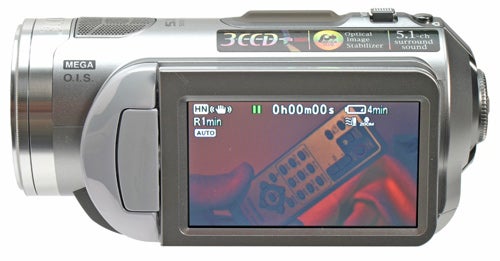
This brings me neatly to actual image quality and I am happy to describe it in one work – stunning. At the time of review we were fortunate to have a 42in Toshiba 1080p screen, which is a great match for the 1,440 x 1,080i images that this camera is capable of capturing. The level of detail, the sharpness and the clarity were excellent, in both bright and darker conditions. It’s amazing that you can record such images on such a small device.
With a more critical eye I did notice some noise, due to the compression and the reduced bit-rate over AVCHD’s maximum. If there was one disappointment with the images it was that despite the presence of a three CCD image sensor colour accuracy was not spot on. My control was my three-year old’s red fire engine, which my single CCD Sony DV camcorder renders as a weird orange. The Panasonic was closer, but still not right. Even so, colours were bright and on the garish side, but sometimes the HDC-SC1 wasn’t quite spot on. The ‘Asbo’ orange of Riyad’s Focus ST was also slightly skew, being not quite the right shade of insane.
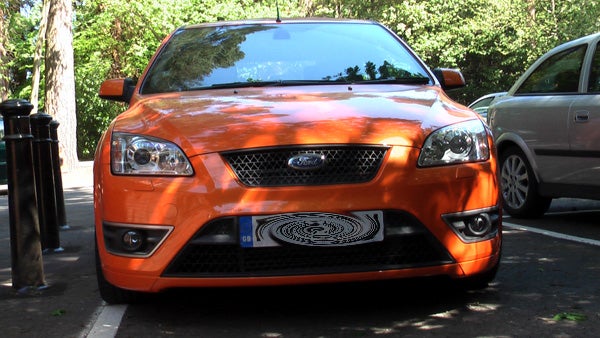
In very bright sunlight it struggled to deal with bright light and darker areas in the same scene but it does have manual controls to reduce the aperture to deal with this. Still, for the market this is aimed at this is nit-picking. Sure, you can get even better HD units but you’ll be looking at far larger, far more expensive near professional quality units. Unfortunately, I couldn’t get the full effect of the 5.1 surround sound as I didn’t have a surround set to test with, but the zoom effect were still noticeable playing back on the stereo TV – the sounds of what I zoomed in on were boosted, and when zooming out the surrounding ambient sounds came back into play. The Dolby Digital Creator chip essentially mixes the inputs of what it picks up from the six speakers on the fly.

Of course, you will eventually want to get your footage of the card – while SD cards are coming down in price, they’re still a far cry away from the cost of blank DV tapes. I moved footage onto my PC using the bundled HD Writer software. It is a decidedly lean application in terms of features – it won’t even let you play back your footage in full screen, which seems a bit rubbish to me. However, you can get round this with Cyberlink’s PowerDVD 7, which contains that necessary codec and will happily play back the M2TS files.
I see it more of a way to store your footage while you wait for applications to come out that support the format. I did manage to use it to burn a DVD, and successfully played it back in on a Panasonic Blu-ray player. You won’t of course be able to play back on a regular DVD player, as it won’t be able to read the AVCHD files. I tried it on a Toshiba HD DVD player but with no joy.
There’s no doubt that the HDC-SD1 is the pinnacle of consumer level video capture devices that are that are available today. It’s small, light, easy to use and capable of producing some wonderful quality images with impressive sound quality, that’s free from motor noise. Many might be put off by the new capture format but with the arrival of software from Ulead and Pinnacle that’s no longer an issue, at least for PC users. Hopefully Mac users will be looked after too soon, as well as the more professional end of the market.
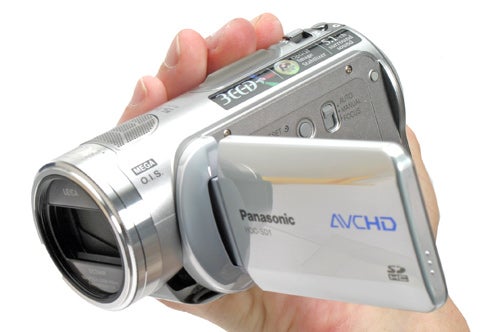
The question of whether you should go for the SD1 is really a question of how brave you are with new technology. The AVCHD codec is just not as established a DV and if you want to be sure you can use your favourite video editor then its best to stick with HDV. However, the fact is that most consumers, despite what there intentions are, never bother to edit their footage. Instead you can simply keep your footage on your PC. Alternatively, if you have a Blu-ray player, you can burn the content to DVD. And if you happen to have one of this year’s range of Panasonic Viera TVs with an SD card slot, you can just take the SD card out of the camcorder and play the content straight back on the TV, which is a very nice touch. Overall though, I have to say that I loved using the HDC-SD1 and if I were looking to buy a new camcorder, right now this is the one I would get.
”’Verdict”’
The HDC-SD1 is a fantastic cutting edge piece of technology that finally does away with the need for tapes. It’s small and light, delightfully easy to use and most of all takes superb high definition images. The AVCHD codec means that few editing applications will handle it, but there are already two packages on the market on the way and more to follow. If you like being at the cutting edge, the HDC-SD1 is highly recommended.
Trusted Score
Score in detail
-
Features 9
-
Value 8
Image Processor
| Image Sensor Quantity | 3 |
| Image Sensor Size (Millimeter) | 0.25"mm |
Lens Features
| Digital Zoom (Times) | 700x |
Video Recording
| Recording Media | Memory Card |
| Video Capture Format | MPEG-4 |
| Max Video Res | 1920 x 1080 |
| Minimum Lux Rating (Lux) | 2 luxlx |
| Image Stabilisation | Optical |
General Features
| LCD Screen Size (Inch) | 3 in |

